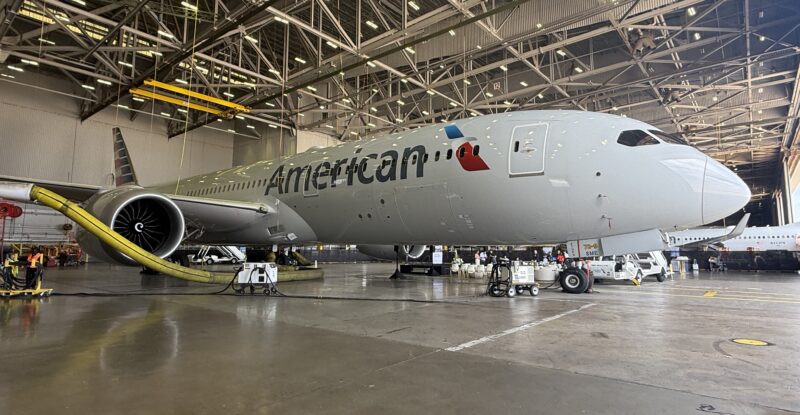FORT WORTH — Just two weeks after United Airlines tried to seize the spotlight by announcing new premium-heavy Elevated interiors for its forthcoming new Boeing 787-9 twinjets, American Airlines has countered with a major reveal of its own in Fort Worth, Texas.
With the unveiling of its redesigned 244-seat Boeing 787-9 featuring Flagship Suite seats, enhanced amenities, and a dramatic shift in cabin layout, American is sending a clear message: it’s ready to reassert itself as a premium carrier to rival Delta and United on international routes.
Runway Girl Network was on site to witness the event firsthand — full disclosure, as a guest of the airline.
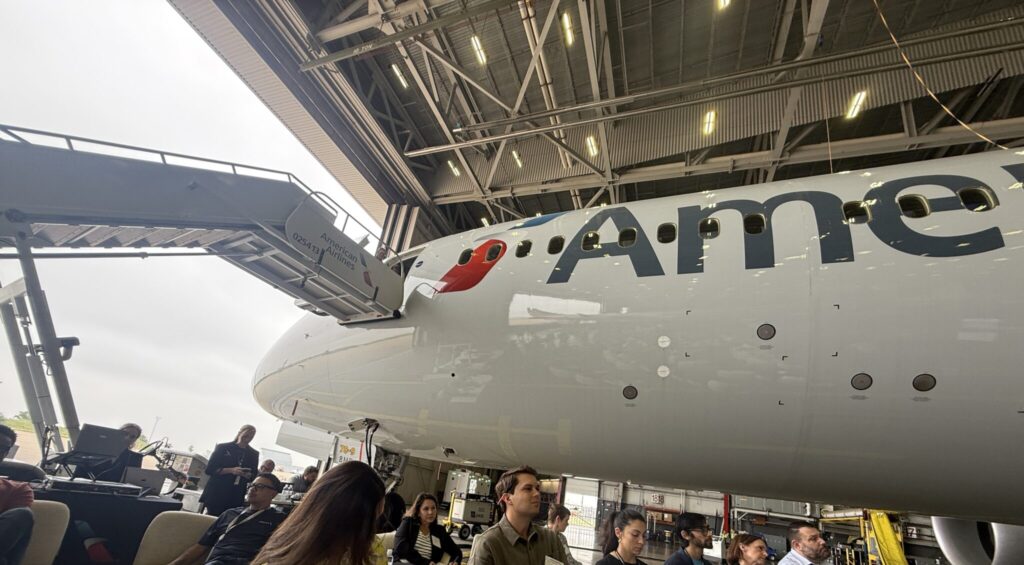
Compared to the LOPA (layout of passenger accommodations) of American’s existing 787-9s, this new configuration reduces total seat count by roughly 14%, from 285 to 244, while increasing business class seats by 70% and premium economy by 52%.
It’s a calculated move by management to favor revenue yields over volume, and echoes broader industry trends as leisure-heavy premium demand continues to outpace corporate travel recovery.
Here’s how American’s new Dreamliner stacks up.
Flagship Suite and Flagship Suite Preferred
The headline upgrade is the debut of American’s Flagship Suite® offering: 51 lie-flat seats, configured 1-2-1 including eight biz-plus Flagship Suite Preferred seats located in the first row of each of the two business class cabins. This is a major jump from the 30-seat business cabin on the airline’s in-service 787-9s.
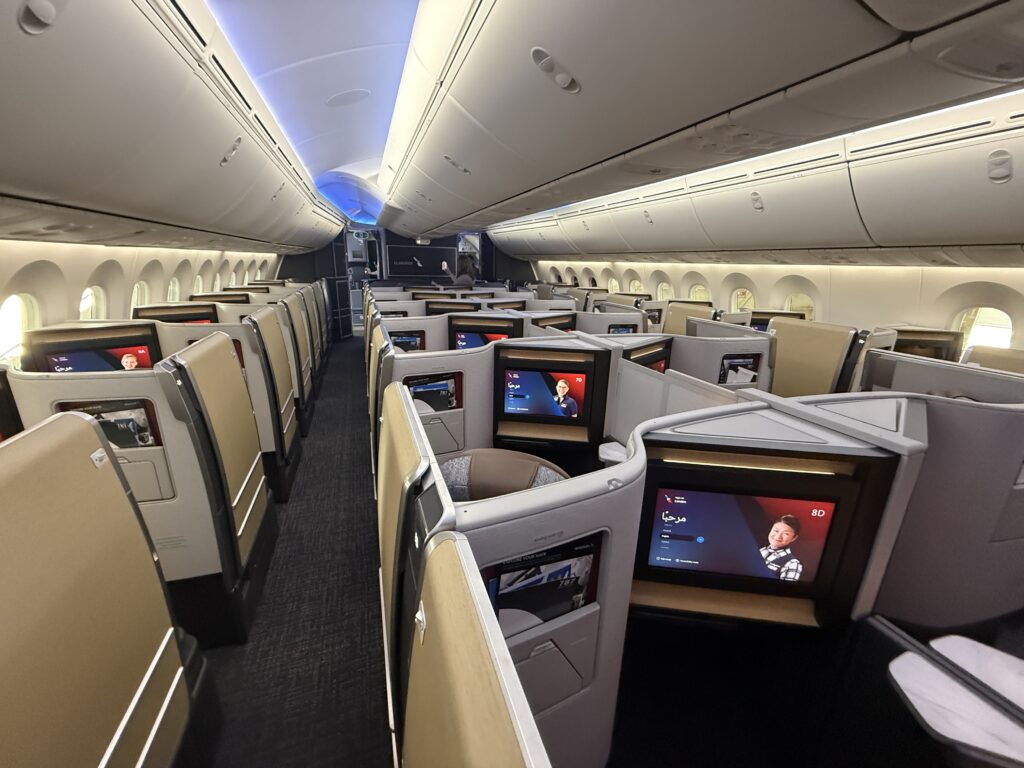
Styled by design house Teague, the suites are based on the Ascent platform from Adient Aerospace, now known as Elevate Aircraft Seating. Every seat offers 21-22 inches of width, and sliding privacy doors that are rapidly becoming table stakes in long-haul premium travel.
The doors are not yet certified for inflight use, but an American spokesperson says: “We are working with the FAA to finalize the certification to operate the doors inflight and expect customers will be able to enjoy the privacy feature in the coming weeks.”
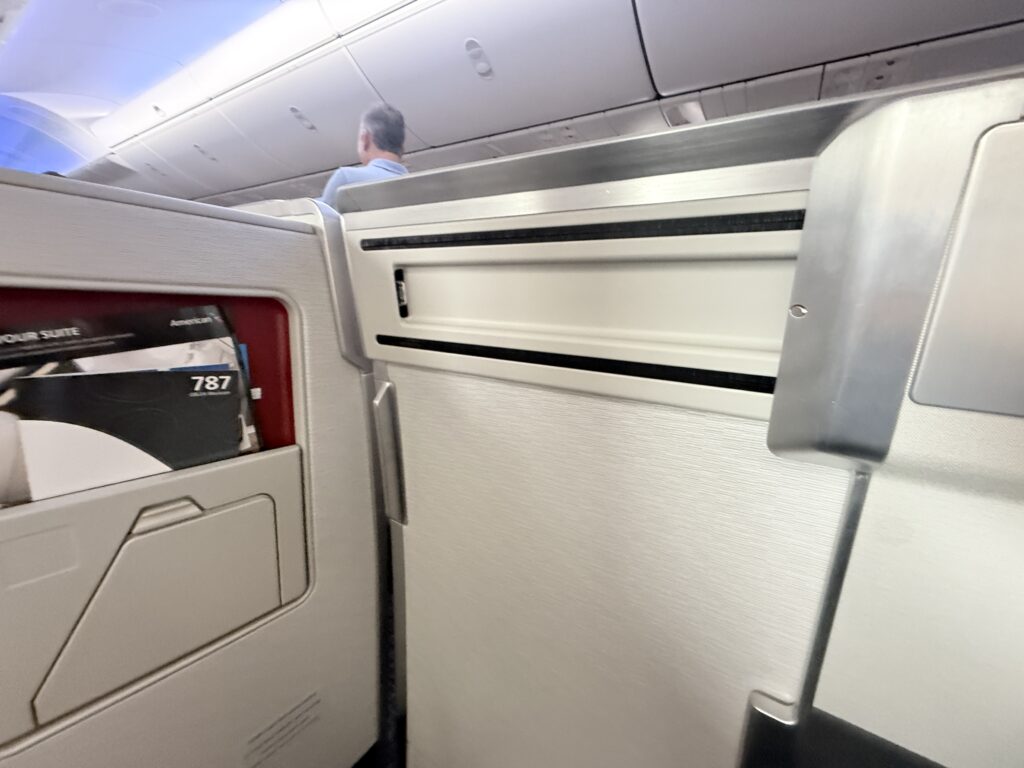
Naturally, each suite also includes a lie-flat bed, and what American calls a “one-of-a-kind chaise lounge” option.
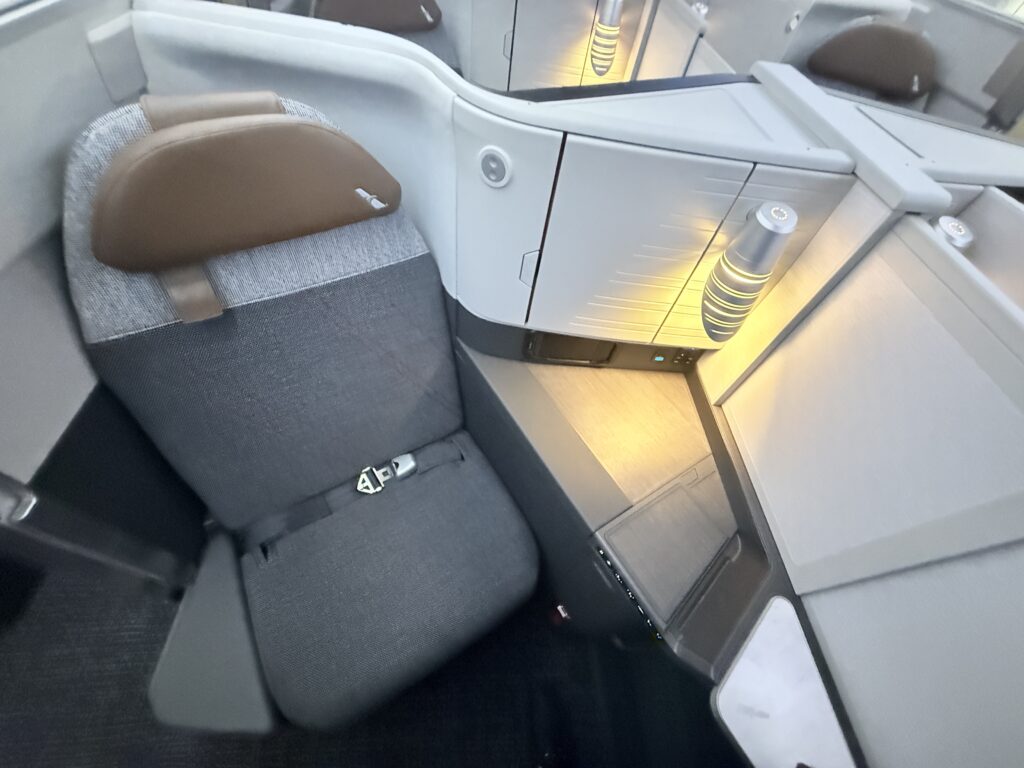
Expect multiple power ports, wireless charging, and various storage compartments, including some big enough for a laptop.
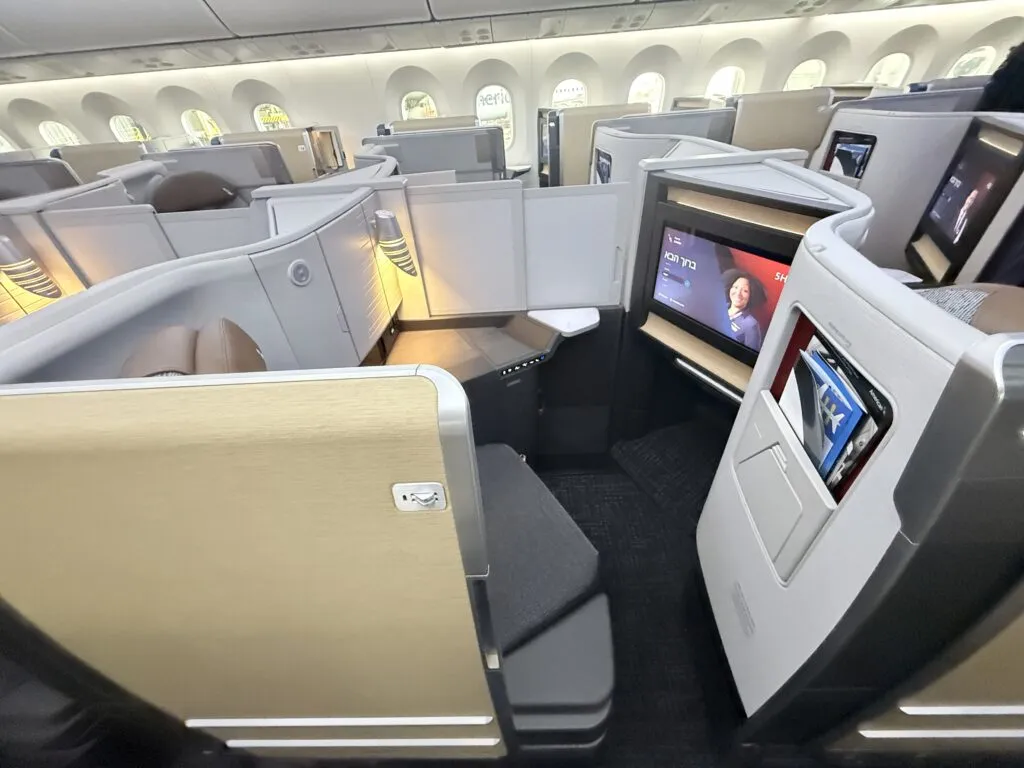
Inflight entertainment, with Bluetooth integration, is delivered via Thales’ latest generation AVANT IFE system with Optiq displays. These are billed as “the industry’s first 4K high dynamic range (HDR) seatback screens enhanced with Samsung QLED proprietary technology.”
Your author can confirm that they offer a significant upgrade in interface and responsiveness thanks also to a newly redesigned GUI.

Sized 17 inches, the Thales IFE screens are, however, smaller than the Panasonic screens that will debut in Polaris business class on United’s new 787-9s. In recent years United has made IFE a cornerstone to its competitive advantage, and is now doubling down on that strategy with 27″ screens planned for biz-plus Polaris Studio and 19″ for standard Polaris.
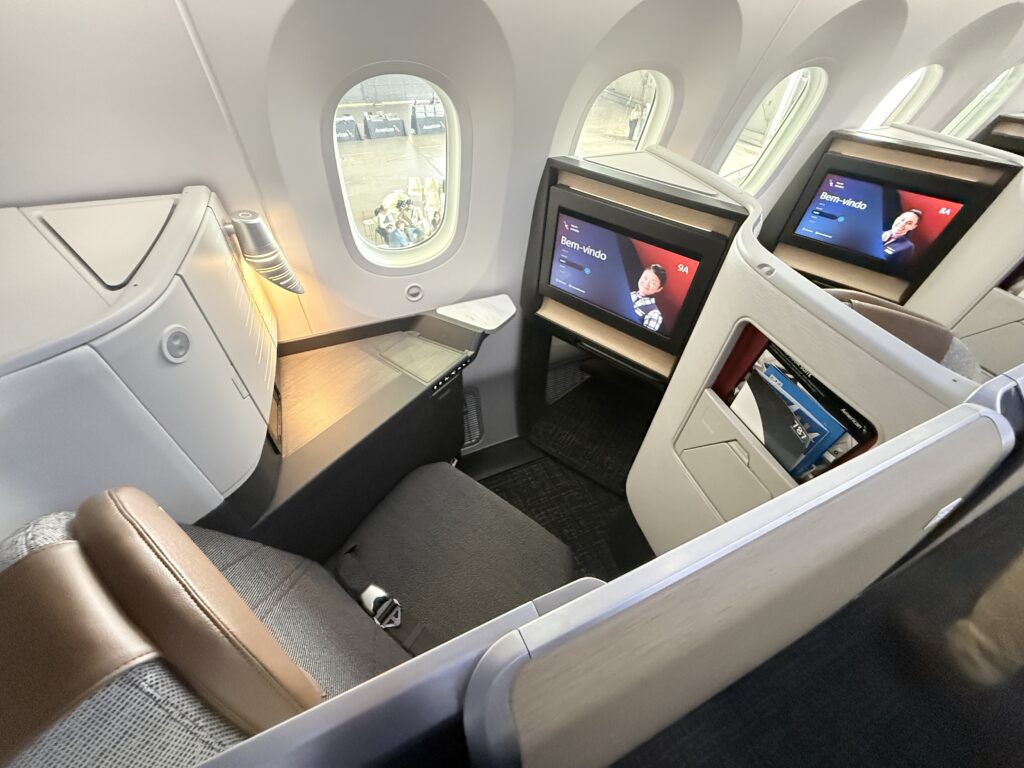 Passengers flying in American’s new biz-plus Flagship Suite Preferred product can expect more real estate and furniture.
Passengers flying in American’s new biz-plus Flagship Suite Preferred product can expect more real estate and furniture.
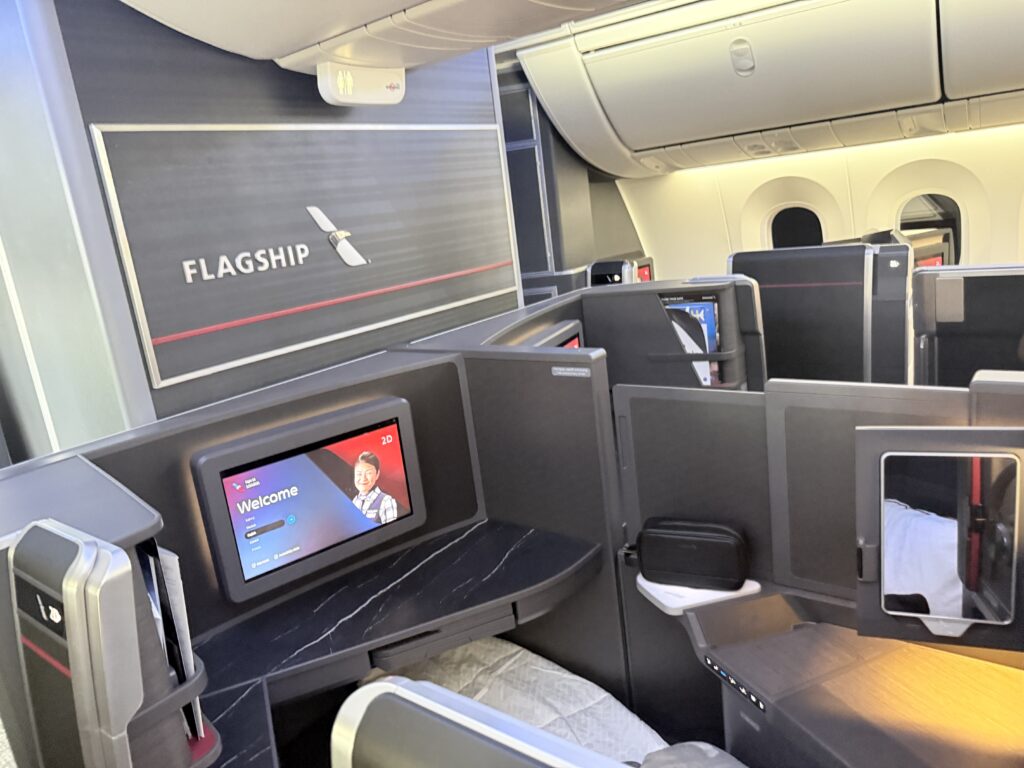
And there is more space in the footwell of the Preferred suites.
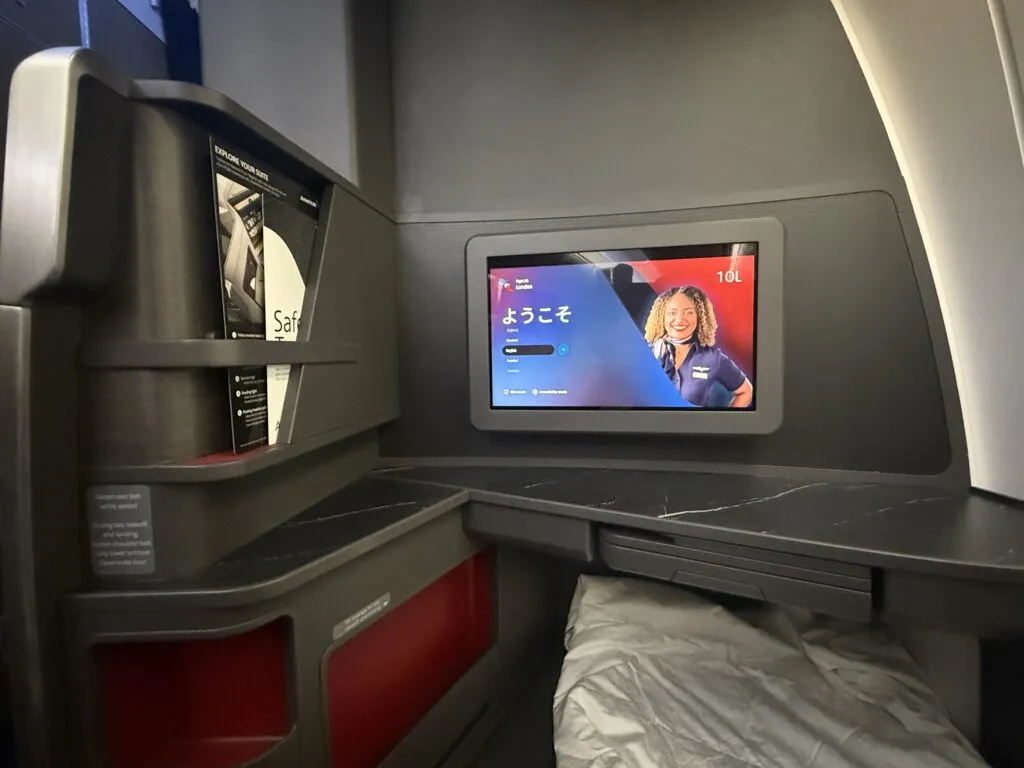
On the soft product front, passengers in Preferred receive additional amenities like pajamas, a memory foam pillow, enhanced bedding, and upgraded amenity kits.
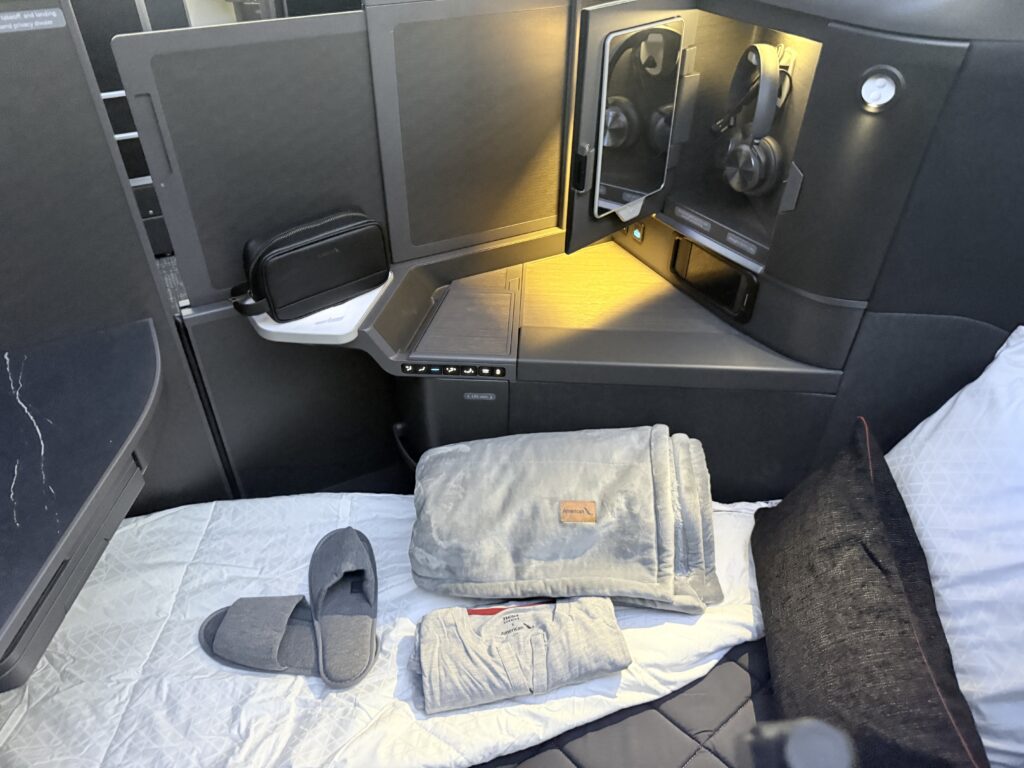
The absence of an ottoman is notable, as it means a companion cannot be accommodated in Flagship Suite Preferred. In contrast, United includes an ottoman in its new Polaris Studio for the 787-9.
American also hasn’t introduced elevated dining or service enhancements at the same level as United’s planned new caviar offering and premium ground services.
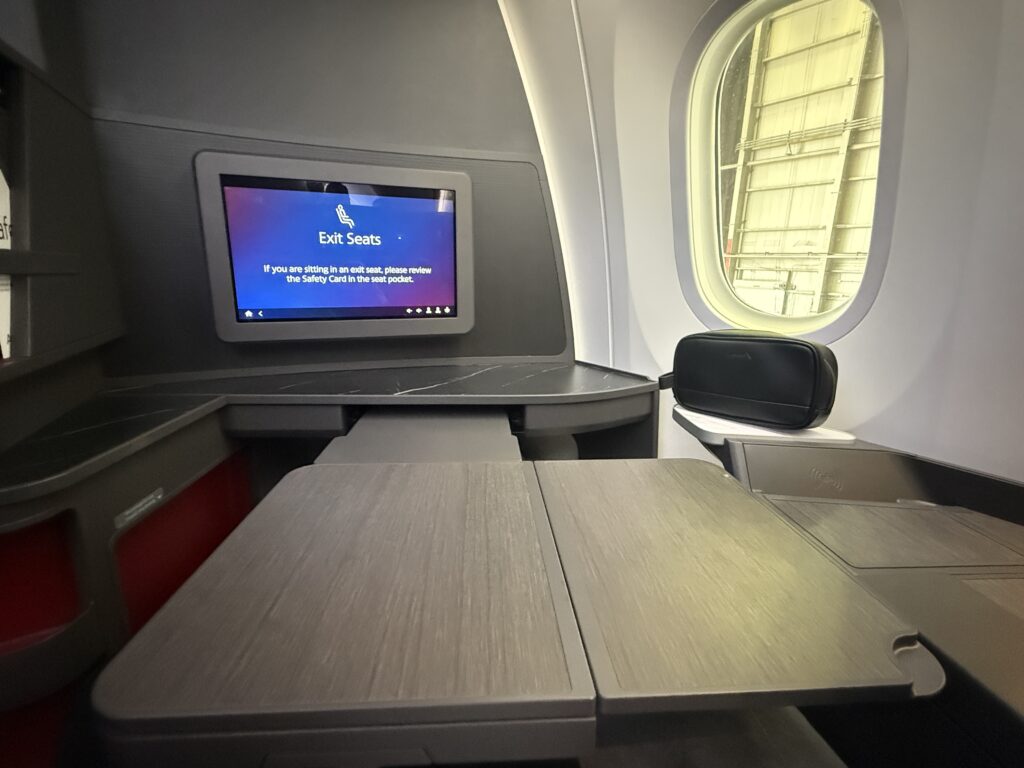
There is much chatter amongst the AvGeek community about American’s decision to not offer a materially larger IFE screen for this front-row, biz-plus product.

Design-wise, the new American cabins introduce a warm palette in the main Flagship Suite seats.
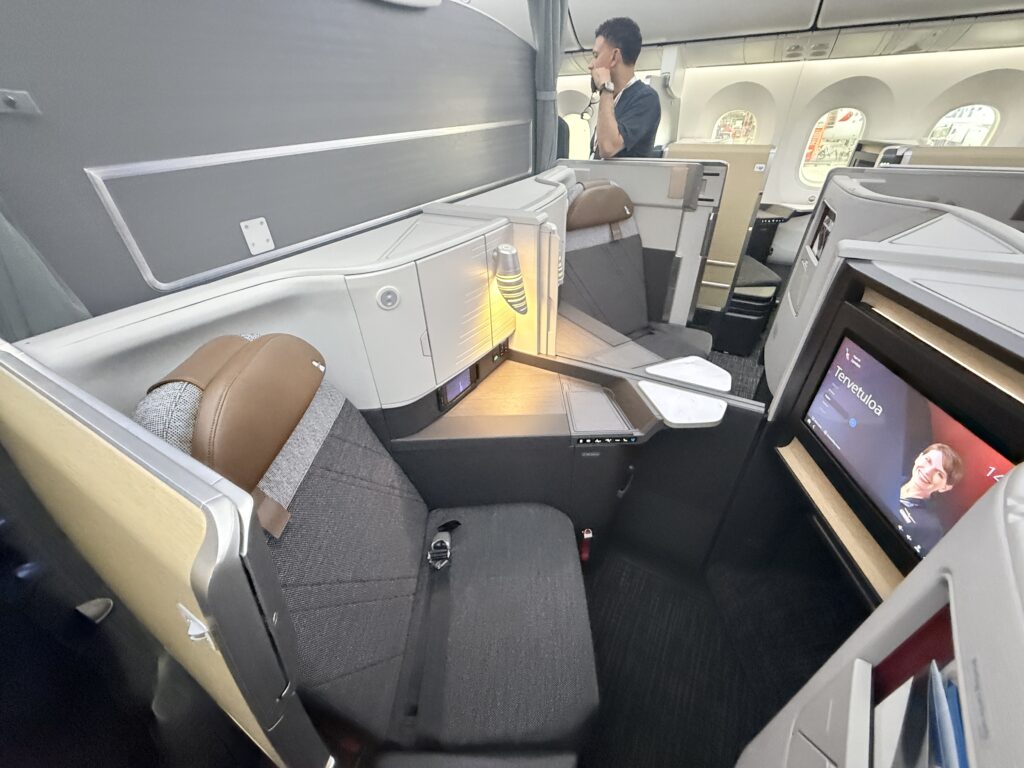
But this scheme switches abruptly to a black and marble finished aesthetic in the Preferred suites. The result is a visual dissonance within the same cabin.
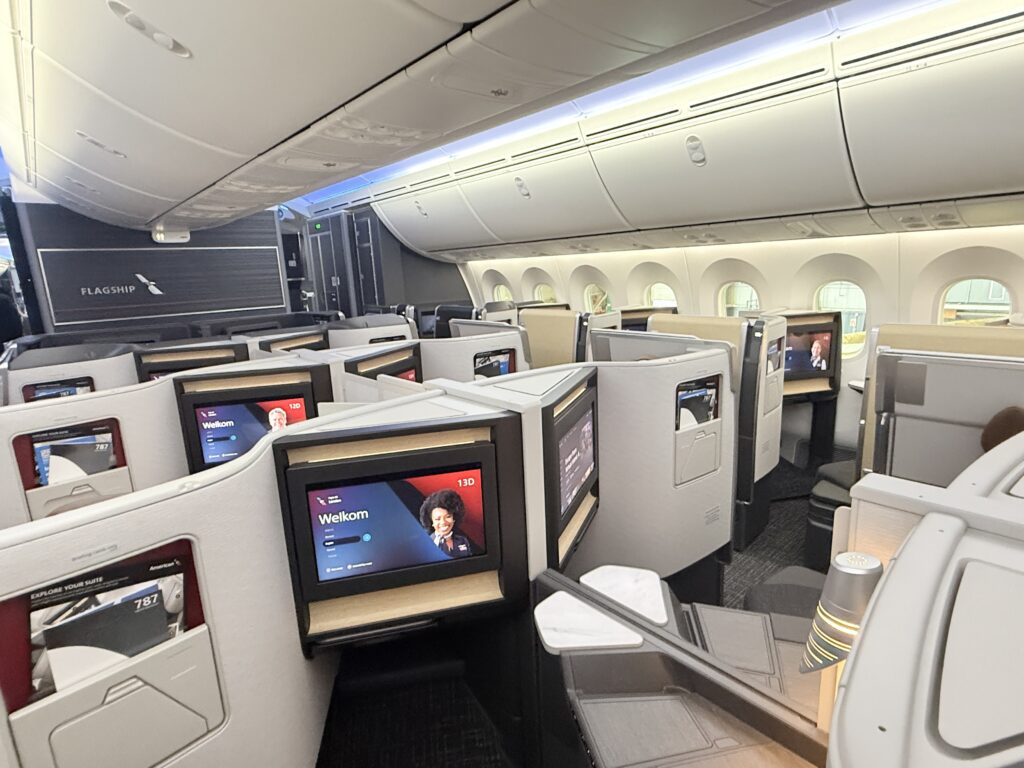
Compounding the juxtaposition, the thick bezel around the IFE monitors in Preferred cheapens the overall premium feel, especially when compared to United’s large and flush, edge-to-edge OLED screens for its new 787-9s.
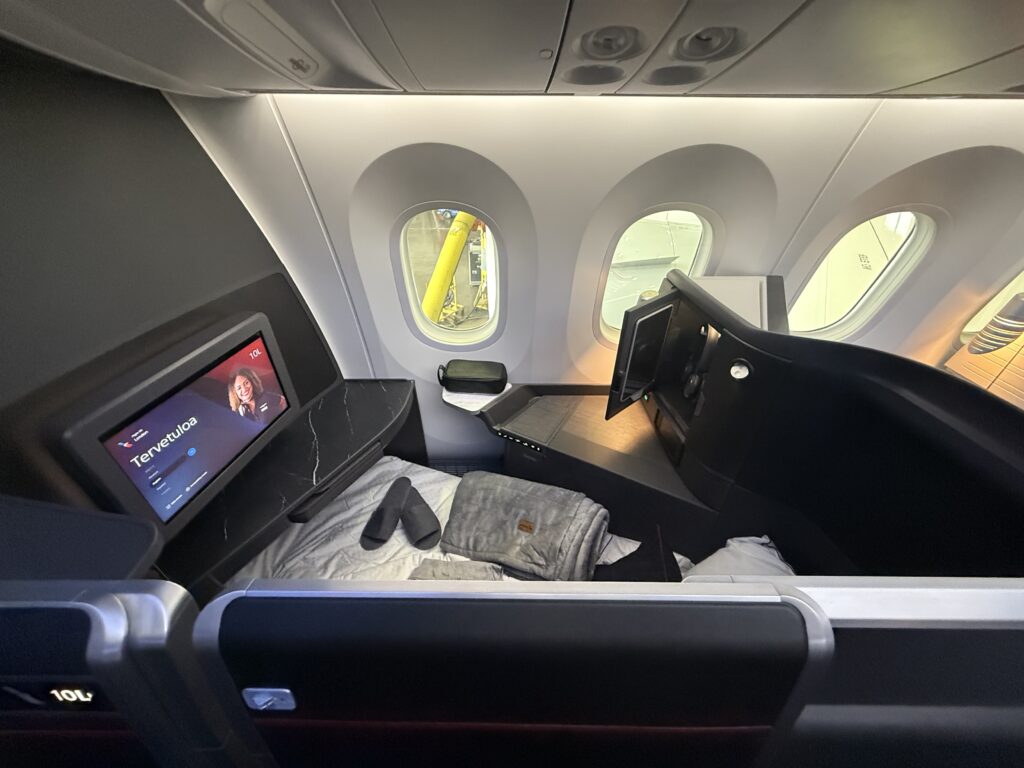
American’s layout is a uniform reverse herringbone: all window seats face the windows, and all center seats face inward.
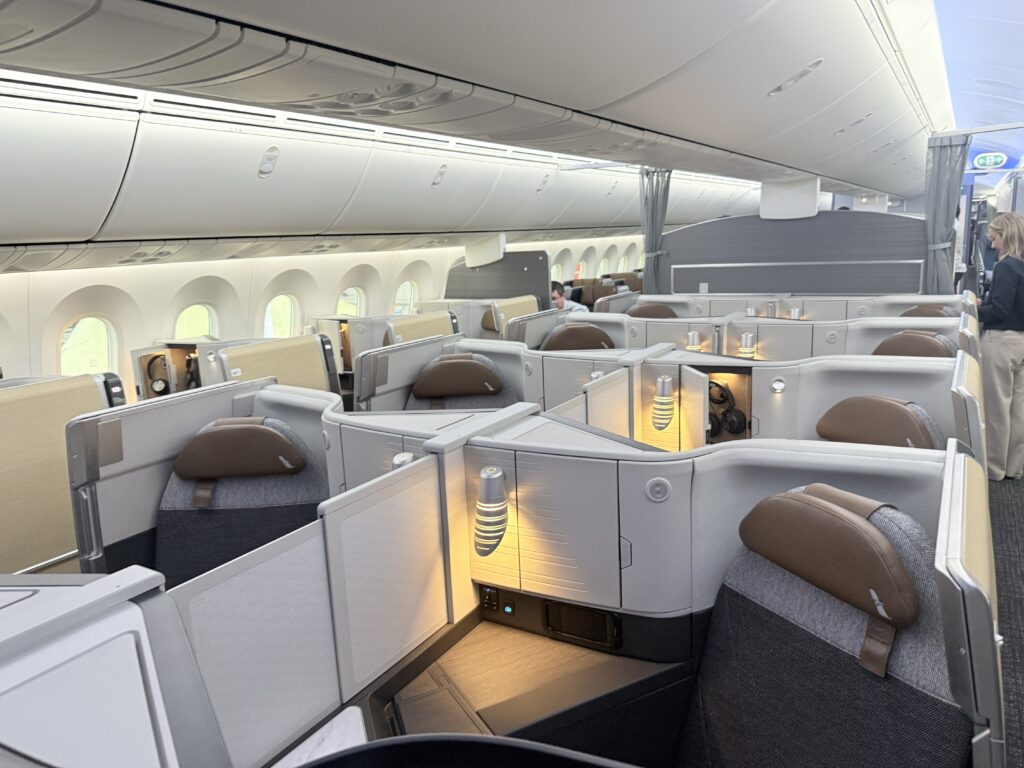
This is a passenger-pleasing configuration for both lone travelers and those traveling in pairs, as further facilitated by a moveable divider in each center pair. But, notwithstanding the privacy provided by high shrouds and high doors, it doesn’t significantly move the needle on seating platforms that have flown for nearly two decades.

Despite a few foibles, Flagship Suite is a meaningful step up from American’s previous business class.
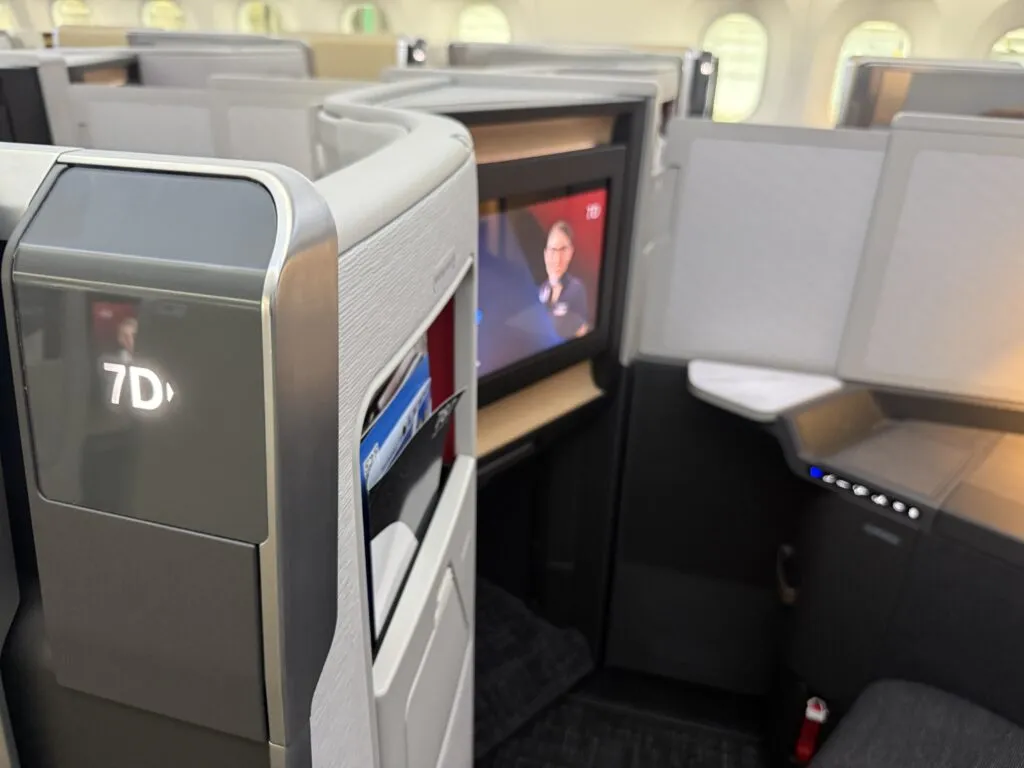
Small but thoughtful touches extend to the lavs up front.
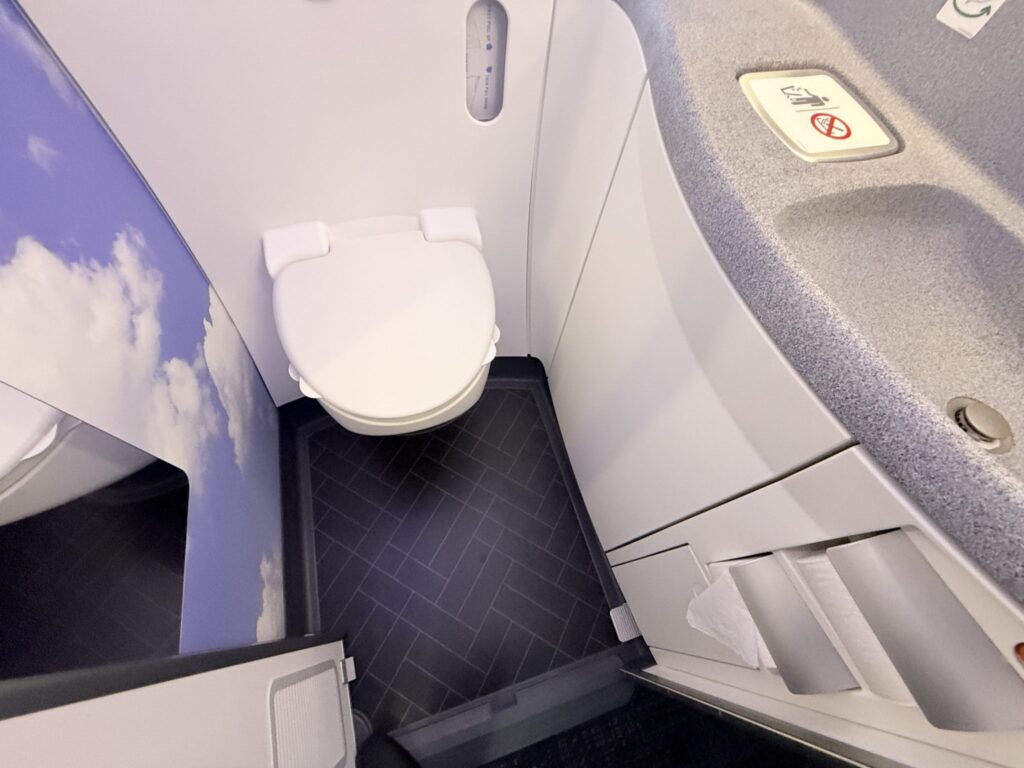
Taken as a whole, American has enhanced its competitive position with these new interiors.
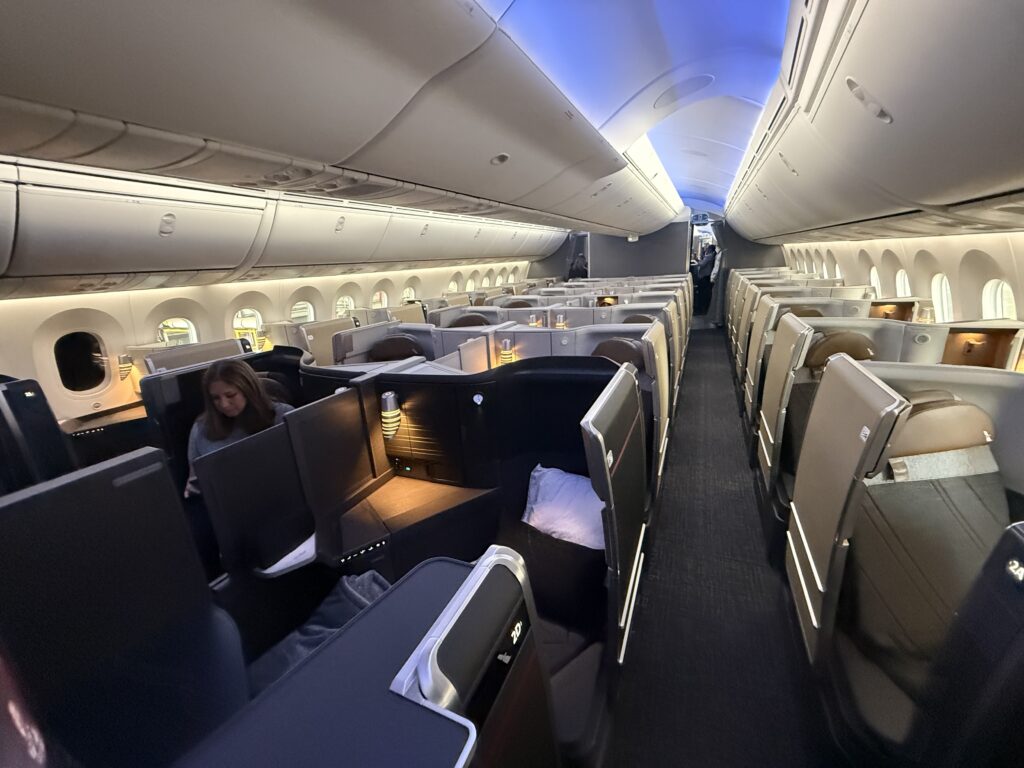 Premium Economy
Premium Economy
American has also brought important improvements to its Premium Economy cabin aboard the new 787-9, expanding the number of seats and introducing comfort and tech enhancements aimed at long-haul travelers.
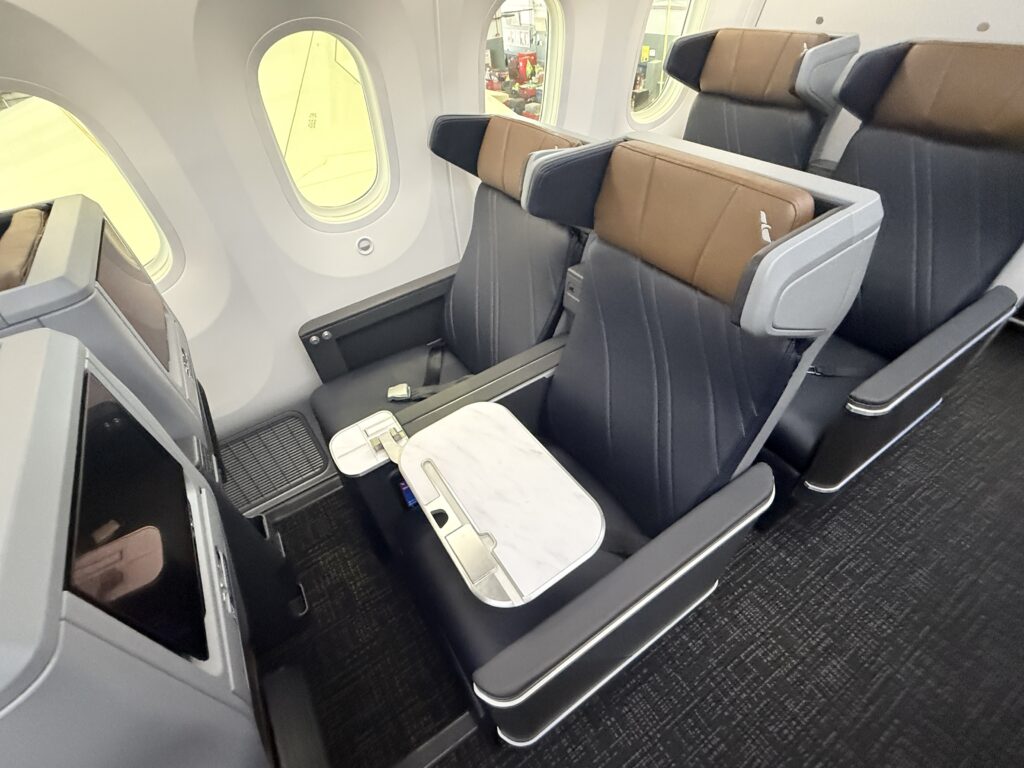
The refreshed cabin features 32 seats in a 2-3-2 layout — up from 21 seats on American’s previous 787-9 configuration.
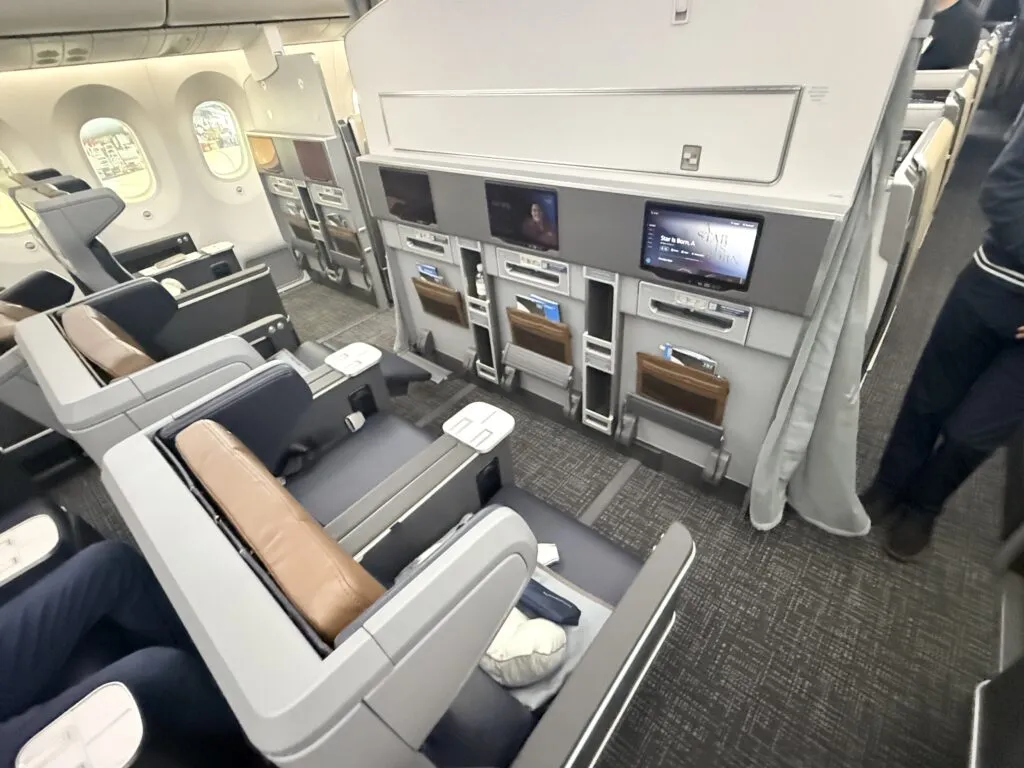
With 38 inches of pitch, approximately 19 inches of width, and up to 8″ of recline with an articulating seat pan, the baseline hard product is the same as will be found on United’s new Elevated 787-9.
Individually adjustable calf rests and footbars, winged headrest privacy, and increased personal storage ensure American’s Premium Economy hard product is competitive.
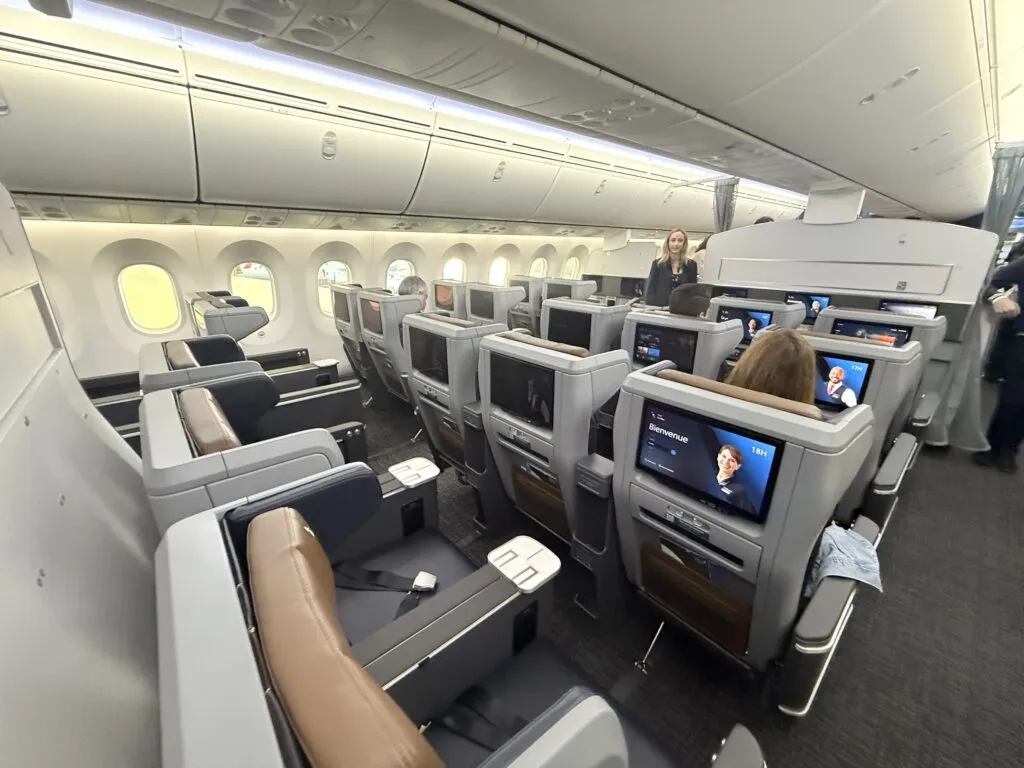
The Thales AVANT Optiq displays are sized 13.3 inches in premium economy, and feature Bluetooth headphone pairing. Notably, this Bluetooth integration worked effortlessly when we tried it. Each seat also includes wireless charging, USB-A, USB-C, and AC power.
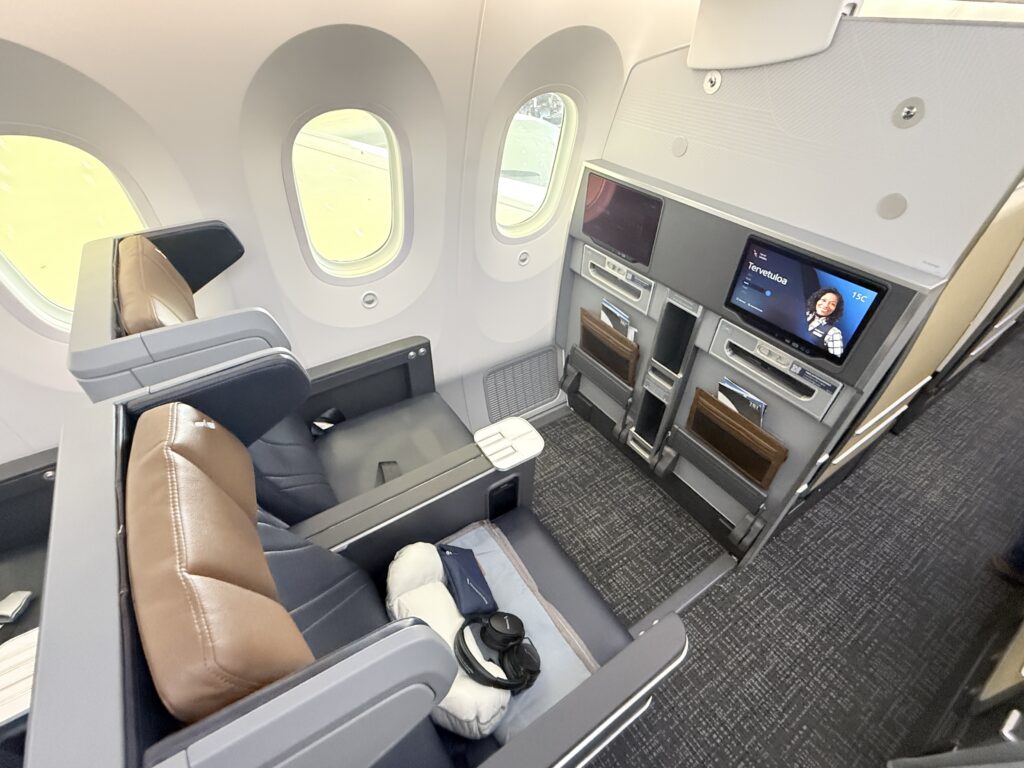
Dining and amenities also get an upgrade. Expect a premium meal service, served on real dishware, plus complimentary beer, wine, and spirits; a soft blanket, fluffy pillow, over-ear headphones and a refreshed amenity kit.
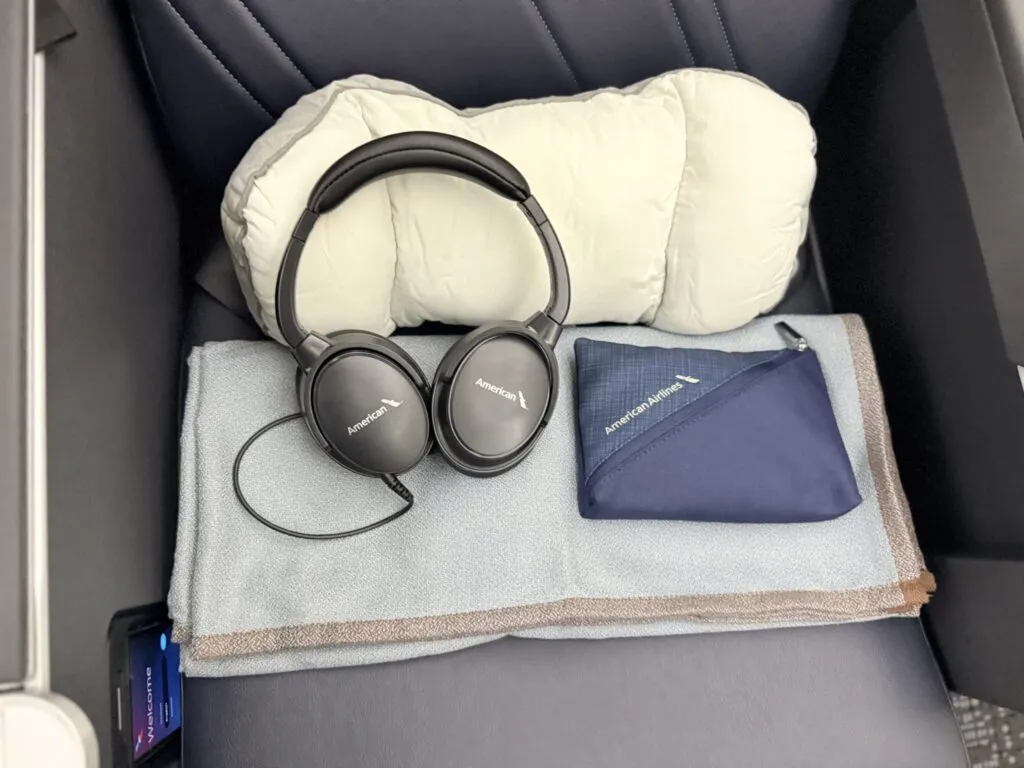
The experience reflects a broader trend that sees Premium Economy become a valuable and growing piece of real estate on long-haul aircraft.
Main Cabin and Main Cabin Extra
Also in line with industry trends, American’s 787-9 features a smaller economy class cabin. There are just 18 extra-legroom Main Cabin Extra seats and 143 Main Cabin seats, configured 3-3-3.
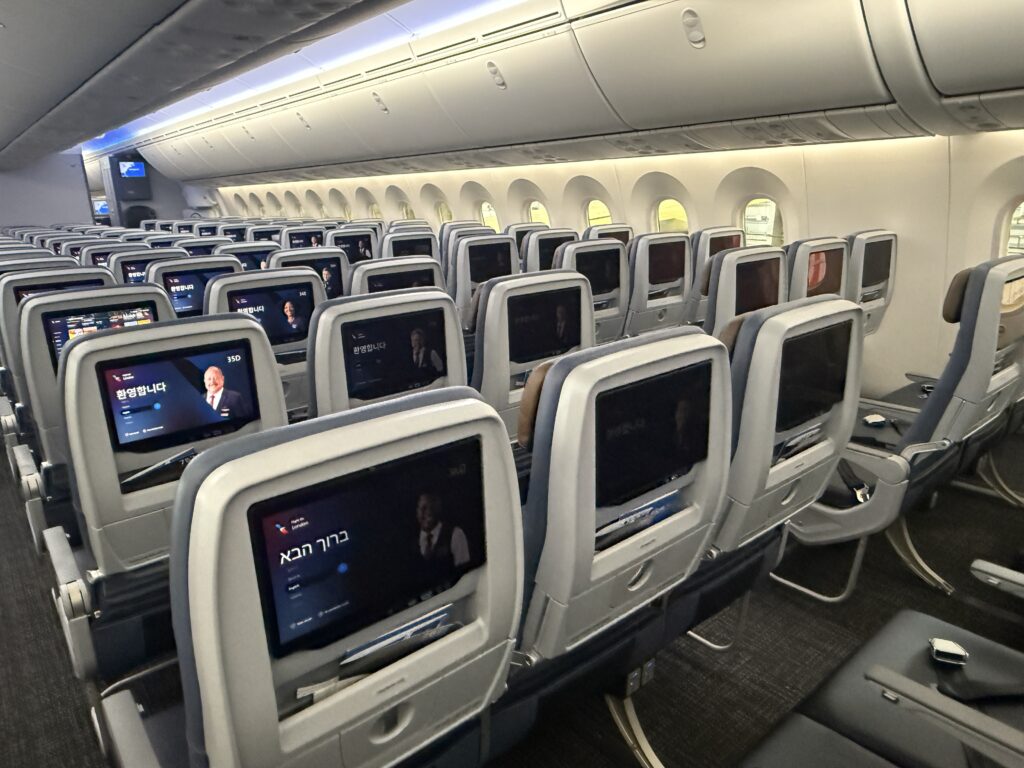
The cabin is divided into two parts, including a more intimate Main Cabin Extra mini cabin directly behind Premium Economy. This mini cabin contains just 21 seats across 2.5 rows, offering a quieter, more segmented vibe.
 Main Cabin Extra offers 34 inches of pitch, down slightly from 35″ on older aircraft. Standard Main Cabin pitch remains the same at 31 inches. Seat width averages approximately 17.5 inches, slightly wider than on previous 787-9s.
Main Cabin Extra offers 34 inches of pitch, down slightly from 35″ on older aircraft. Standard Main Cabin pitch remains the same at 31 inches. Seat width averages approximately 17.5 inches, slightly wider than on previous 787-9s.
Each seat is equipped with a 12-inch 4K IFE screen, which supports Bluetooth headphone pairing. USB-A, USB-C, and universal AC outlets are available at every seat.
Inflight connectivity
The tech upgrades continue with inflight connectivity: the new 787-9s are the first American widebodies to offer Viasat’s high-capacity Ka-band satellite-powered IFC system, as opposed to Panasonic Avionics’ Ku-band solution aboard current 787-9s.
The new system offers higher bandwidth and faster speeds, with free Wi-Fi access for AAdvantage loyalty members starting in January 2026.
Connectivity plans for the rest of American’s widebody fleet — including the Boeing 777s and existing 787s — are still being determined, though SpaceX’s Starlink is being considered as an option, Runway Girl Network can confirm.
United, meanwhile, is rolling out Starlink fleet-wide.
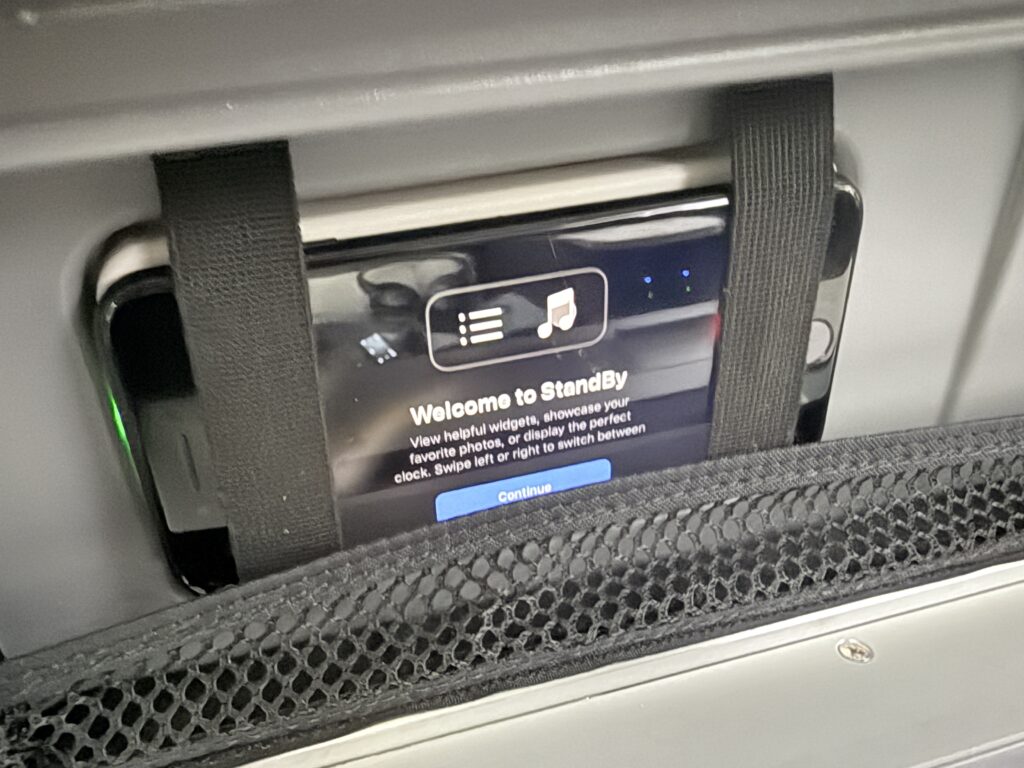 Fleet rollout and what’s next
Fleet rollout and what’s next
American’s premium-heavy 787-9 enters service on 5 June 2025, with a domestic inaugural on the Chicago–Los Angeles route, followed by immediate international deployment on Chicago–London Heathrow. The US major will press its new 787-9 into service on other long-haul routes later this year, including Philadelphia–Zurich, Philadelphia–London Heathrow, and Dallas/Fort Worth–Brisbane.
Runway Girl Network will be on board the first roundtrip, Chicago–LAX–Chicago, seated in Flagship Suite Preferred on the outbound and Premium Economy on the return for a full nose-to-tail report of the product in action.
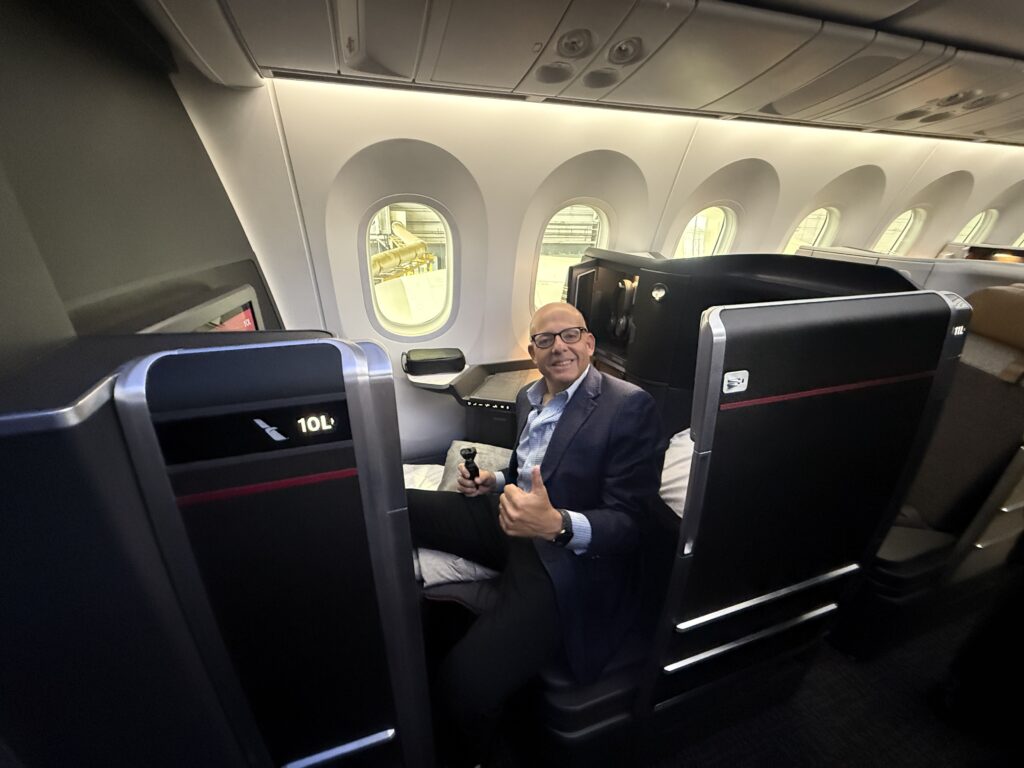 This is the first of 30 Boeing 787-9s featuring the new configuration and new interiors. Eight are scheduled for delivery in 2025.
This is the first of 30 Boeing 787-9s featuring the new configuration and new interiors. Eight are scheduled for delivery in 2025.
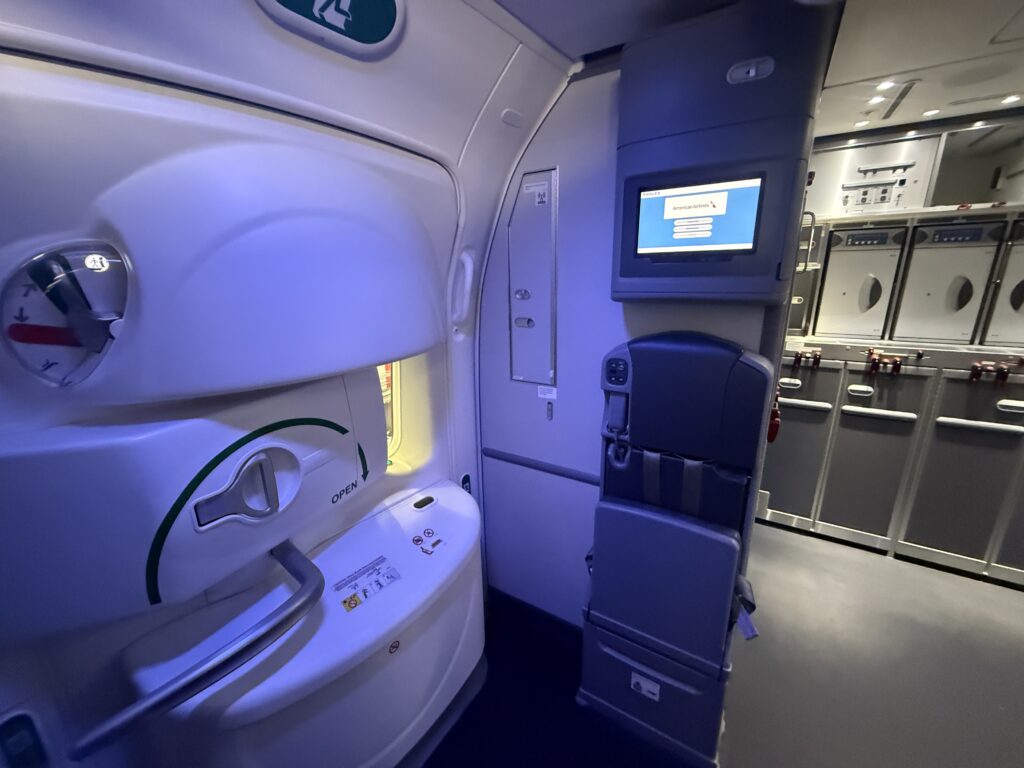 American will also retrofit all 20 of its Boeing 777-300ERs with the new Flagship Suite and upgraded Premium Economy cabins.
American will also retrofit all 20 of its Boeing 777-300ERs with the new Flagship Suite and upgraded Premium Economy cabins.
However, the airline has not announced plans to retrofit its Boeing 777-200s, 787-8s, or existing 787-9s (many of which have just received new cabins). For now, they will retain their current interiors — creating a two-tier experience depending on aircraft and route.
American struck first with its new premium-heavy Dreamliner announced back in 2022, and United fired back with its new Elevated 787-9 just two weeks ago. But while United’s bold rebrand grabbed headlines, its new cabin won’t fly until late 2025.
American has the first-mover advantage or perhaps disadvantage, depending on how you look at it.
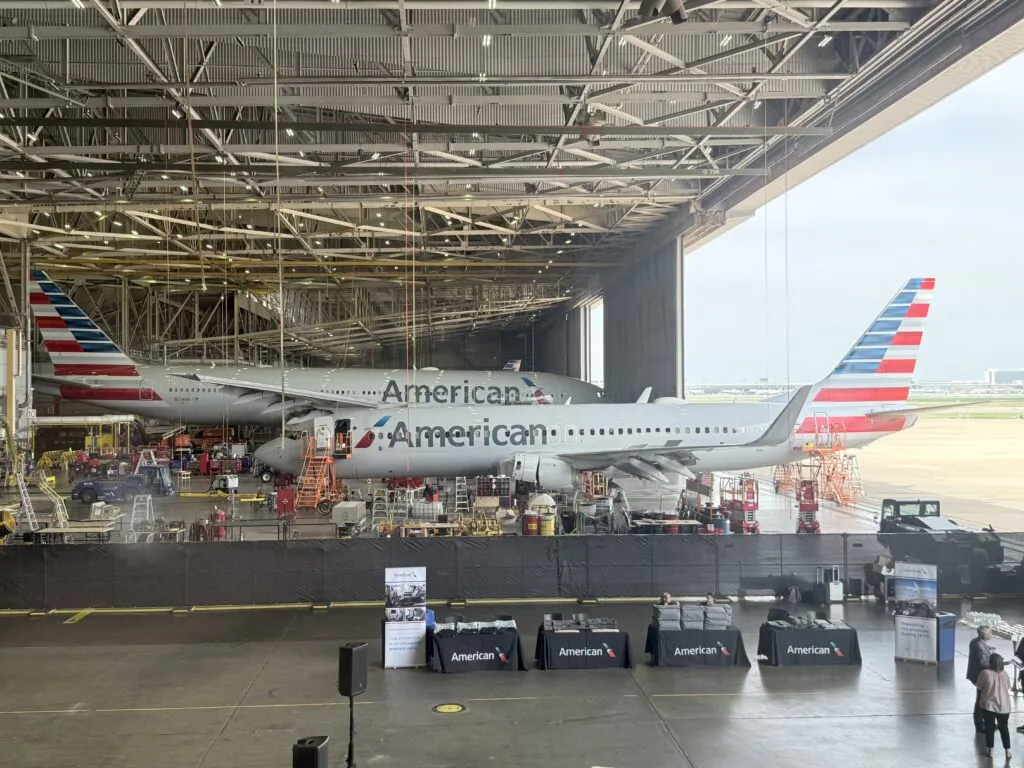 Related Articles:
Related Articles:
- Why seatback IFE is core to United’s premium push
- American Airlines’ Flagship Suites aboard 787-9P are now on sale
- American Airlines reverses course on free Wi-Fi
- United looks to set long-haul premium standard with Elevated 787-9
- How Delta Sync seatback demonstrably improves PaxEx
All images of American Airlines‘ 787-9 are credited to the author, Chris Sloan




